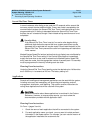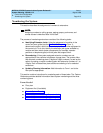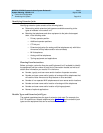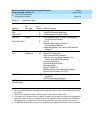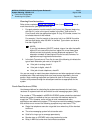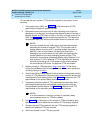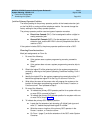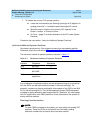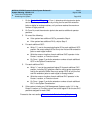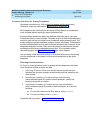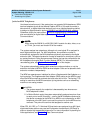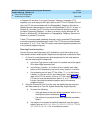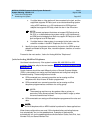
MERLIN LEGENDCommunications System Release 6.1
System Planning
555-661-112
Issue 1
August 1998
Control Unit Configuration
Page 2-20Numbering the System
2
To calculate the total number of TTRs that are required by the system, do the
following:
1. If the system has a VMS, use Table 2–3
to find the number of TTRs
required by the system to support the VMS.
2. Estimate the hourly call volume for all calls originating from single-line
telephones, incoming calls (including private network tandem tie trunks) on
Remote Access and DID lines, all calls on tie lines, and calls routed to the
VMS. Use Table 2–4
to find the system requirements for TTRs based on
the estimated hourly call volume, and whether Account Codes are used.
NOTE:
You must consider the call traffic across a private network when
estimating the number of required TTRs. This includes calls on
analog tandem tie trunks and T1-emulated tandem tie trunks. In
addition, if your private network includes Centralized Voice
Messaging, you must consider the call traffic coming across the
private network for the voice messaging system and the TTRs
required for the updating of Message Waiting lights (Release 6.1 or
later systems). For this updating, a TTR is required at the sending
end and the receiving end. If the systems in the private network
are connected by PRI trunks, no additional TTRs are needed.
3. Add the number of TTRs obtained in Step 1
and Step 2. If the Group
Calling Prompt-Based Overflow setting (Release 6.0 and later systems) is
not being used, go to Step 6
.
4. If the Group Calling Prompt-Based Overflow feature is being used, add the
number of TTRs needed for the primary delay announcement devices that
are assigned to those calling groups. Use Table 2–5
to determine the TTR
requirements for the primary delay announcement devices.
5. If applicable, add the number of TTRs needed for the secondary delay
announcement devices that are assigned to calling groups using the
Prompt-Based Overflow feature. Use Table 2–6
to determine the TTR
requirements for the secondary delay announcement devices.
NOTE:
If no announcement is used on a primary or secondary delay
announcement device, no TTRs are needed.
6. Use Table 2–2
for information on the number of TTRs provided by each
type of module, and to determine the number of TTRs already supplied.
7. Compare the total TTRs needed to the total TTRs already supplied to
determine if additional TTRs are required.
8. Add a new module if more TTRs are required.



